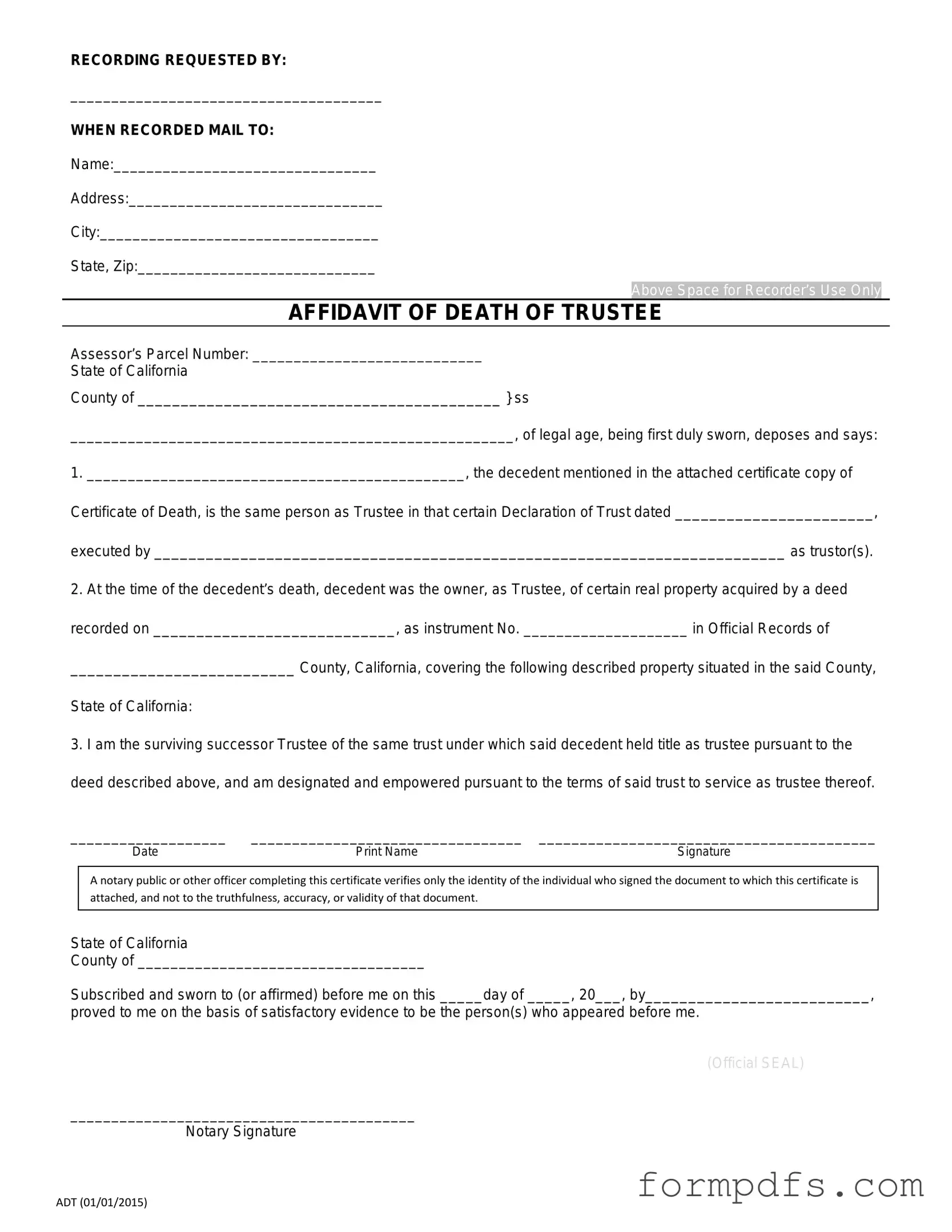What is the California Affidavit of Death of a Trustee form?
The California Affidavit of Death of a Trustee form is a legal document used to formally declare the death of a trustee of a trust. This affidavit serves to notify beneficiaries and other interested parties about the trustee's passing and helps facilitate the transfer of responsibilities and assets according to the terms of the trust. It is an important step in ensuring that the trust is administered correctly after the trustee's death.
Who can file the Affidavit of Death of a Trustee?
The affidavit can be filed by any individual who has a vested interest in the trust, typically a successor trustee or a beneficiary. It is essential that the person filing the affidavit has the authority to act on behalf of the trust and is aware of the necessary details surrounding the deceased trustee's death.
What information is required to complete the affidavit?
To complete the affidavit, you will need to provide the full name of the deceased trustee, the date of their death, and details about the trust, including its name and date of establishment. Additionally, you may need to include information about the successor trustee, if applicable. Documentation such as a death certificate may also be required to validate the claim.
Is a death certificate necessary for the affidavit?
While a death certificate is not always required to file the affidavit, it is highly recommended. Including a copy of the death certificate can help substantiate the claim and provide clarity to all parties involved. Some institutions may specifically request it before recognizing the changes in trustee status.
Where should the Affidavit of Death of a Trustee be filed?
The affidavit should be filed in the county where the trust is administered or where the deceased trustee resided at the time of their death. It is advisable to check with local county offices to ensure compliance with specific filing requirements and to understand any additional steps that may be necessary.
What happens after the affidavit is filed?
Once the affidavit is filed, it serves as official notice of the trustee's death. The successor trustee can then assume their responsibilities and manage the trust assets according to the trust's terms. Beneficiaries will also be informed of the change in trustee status, allowing for a smooth transition in trust administration.
Are there any deadlines for filing the affidavit?
There is no specific deadline for filing the Affidavit of Death of a Trustee; however, it is advisable to file it as soon as possible after the trustee's death. Prompt action helps to avoid potential complications and ensures that the trust can continue to operate smoothly without unnecessary delays.
What if there are disputes regarding the trustee's death or the trust?
If there are disputes regarding the trustee's death or the terms of the trust, it may be necessary to seek legal counsel. Disagreements can arise among beneficiaries or between the successor trustee and beneficiaries. Resolving these issues swiftly is crucial to prevent further complications in trust administration.
Can the affidavit be amended after it is filed?
Yes, the affidavit can be amended if new information comes to light or if there was an error in the original filing. It is important to follow the proper procedures for amending legal documents to ensure that all parties are informed and that the trust administration remains valid and enforceable.
